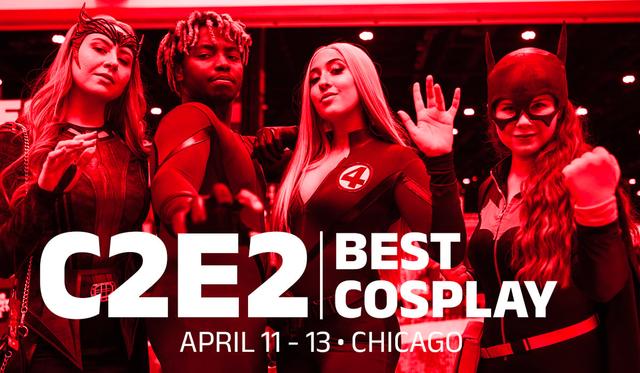If you click on a link and make a purchase we may receive a small commission. Read our editorial policy.
Inside DC's shadowy new superhero team the Vigil with Ram V
Ahead of its series launch this May, Ram V declassifies The Vigil, DC’s latest superhero team title and its unique mission across the DCU.

There’s a new superhero team coming to the DC Universe and they’re unlike any the DCU has ever seen before. After debuting in a short story in Lazarus Planet: Next Evolution #1, The Vigil star in their own comic book series by Ram V and Lalit Kumar Sharma launching May 16 from DC Comics. The Indian team is committed to rooting out strange technology only hinted at by the basest of conspiracy theories around the world before they can proliferate and become a more open secret that threatens to upset the natural order.
Rather than existing in their own isolated pocket of the DCU, the Vigil have quickly made themselves become known, be it hunting down Lazarus resin during the Lazarus Planet crossover event or appearing in Gotham City during Ram V’s Detective Comics run to stop a rogue piece of technology under the city from growing to become uncontrollable. Each member of the team boasts their own unique powers and abilities, though they are not powers that the clandestine superheroes were necessarily looking to acquire for themselves. And as deadly new technologies emerge on an increasing basis worldwide, the Vigil finds their work is certainly cut out for them as the stakes rise steadily.
In an interview with Popverse, Ram V reveals the far-stretching origins behind his original concept for The Vigil, explains how the superhero team fits within the wider fabric of the DCU, and hints what readers can expect from the espionage-tinged series ahead of its launch this May. Also included is an unlettered preview from The Vigil #1, illustrated by Lalit Kumar Sharma and colored by Rain Beredo.

Popverse: Ram, let’s go back to the beginning – how did the initial idea behind the pitch for The Vigil come about?
Ram V: This idea actually goes back far longer than the time it existed as a pitch. I wanted to create a group of Indian superheroes that did a couple of things. First, they moved away from the whole India exotic mysticism mythology-related superheroes. If you look at most of the superhero content around India, it tends to be that. I wanted to do Indian sci-fi, Indian espionage/noir and this has existed in some form as a result of that desire.
To me, America has always felt like this country of right and wrong. There are not a lot of gray shades and, where the grays exist, they’re contentious, whereas India, where I grew up, has always been 80-90% gray and black-and-white only works in theory. In a country like that, what does it mean to be a vigilante? What side are you on when the sides are quite fuzzy? As the story goes on, we’ll lean into those ideas and explore that more.
In its current form, and I have to credit [editor] Jessica Chen with this when we were discussing this, she was like “This is missing something. It needs some sci-fi element.” and I was like “What if they’re conspiracy theory busters but not in the way that we think.” The idea is that there are conspiracy theories in this world, some of them true and some of them largely not true. But we exist in a world with superheroes in this universe.
What if we existed in a world where all these absurd technologies were true and there was a group out there somewhere whose job was to ensure they never went beyond the conspiracy theories. That becomes the defining moment of The Vigil, who themselves are a conspiracy theory and vigilante group.

You’ve done DC team books before, with Justice League Dark, but here you’ve got the added narrative challenge of not only giving each of the team their own time to shine but introducing each of them. How did you want to approach the roster and what each character brings to the team with this fresh creative canvas?
When we say 'introducing' there are two kinds of introductions. There is the introduction of 'what does this person do' and the introduction of 'who is this person.' The 'what does this person do' introduction is very easy to establish and we’re establishing that by dropping the reader into the thick of it with both feet and you’ll figure it out as we go along.
The 'who is this person' introduction is the more interesting one to work on as a writer because, through these first few issues, we see them act in their own element and you start to see the little eccentricities and quirks come out. My hope is, by the time you’ve read these first six issues, you’ll care about some of these characters. You’ll know their past, why they’re broken and what they’re trying to fix.

Speaking to that broken element, these are characters who didn’t ask for their powers and, in some cases, see them as a curse. You and I have spoken about your love of Doom Patrol and Planetary before and how did you want to take those themes and apply them here but with your own spin and voice to these characters?
I think with the Doom Patrol, 'this power is a curse' is very much on its sleeve. I kind of wanted to do something a little bit different in that you’ll notice that all of these characters have physical anomalies. They’re not considered powers and, in a different world, you might even say that they’re 'disabled.' In this world, the Vigil builds them technologies to turn their disabilities into powers but, again, what does that mean?
What does it mean to be special because you’re broken? I think that’s an interesting angle to lean into as well. Spoiler warning, but one of the characters, Saya, has the ability to take other people’s faces and he’s able to do that because he suffers from a real medical condition called Ehlers-Danlos syndrome. Of course, in our story, he suffers from an extreme version, with his skin basically not attached to the rest of him but this is a condition that exists. I find it fascinating to say that superpowers are only one smart modification away from disabilities.

Working with Lalit Kumar Sharma, how did you want to bring these characters to visual life along with their unique perspective on the DCU?
Lalit’s a very interesting collaborator to work with because I don’t think the American/European readership has seen a lot of his work but he’s been prolific as superhero comic book artist back in India. I thought that was fascinating because I have plans of introducing some characters who are specifically Indian takes on otherwise familiar DCU characters.
Having [Lalit] come in, with that very classic Indian superhero style – and there is an art style that is very familiar to me – to have him take that and I get on a call with Lalit and go “Can we tweak this because we’re not doing the standard superhero Indian narrative?” It’s been interesting to watch him tweak that aesthetic that he is very familiar with.
You and I have talked about, well, I don’t what to call them superhero ripoffs but pastiches.
We can call them ripoffs, they were ripoffs when they came out. [laughs]

How did you want to incorporate them because, for a lot of people, that’s their gateway into these characters? How did you want to speak to that and speak to that culturally?
Early on, we’re going to take our time getting to that level of absurdity with the story, so we’ll build to it. I’m fascinated by the idea that, in the DCU, multiple realities exist and, therefore, in a reality where comics are real, there are these Indian ripoffs of Bruce Wayne and Clark Kent roaming around.
If those realities were to merge with ours, you’d have Diet Batman and Diet Superman walking around wondering “Wait a minute, why do those guys get all the acclaim whereas I’ve been doing the same thing – admittedly at 50% capacity.” It’s like Strangers on a Train, if they got together, they’d be collectively more powerful than any individual of them. Is there a conflict there?
The Vigil has a choice then, to go 'This is absurd technology. This is an alternate reality merging with ours, which can’t be good. We need to thwart this before this happens!' You may see the Vigil go up against a version of Batman who’s only halfway a version of Batman, if you will. The possibilities of doing absurd stuff like that is endless when you give yourself the permission to do these meta-narrative things with the book.

When we first saw these characters in the Lazarus Planet special, they were after Lazarus resin and crossed paths with Red Hood and they’ve since showed up in Detective Comics. How did you want to tie these characters into the larger DCU?
It’s important for me personally to have these characters be part of the DCU because you see these kinds of initiatives come up quite often of wanting to be more inclusive and getting characters from new parts of the world. But there’s an instinct to sequester them or cordon them off into corners of their own, partly because – as far as I know, I’m one of the few Indian writers writing in mainstream superhero comics – it becomes difficult to find creators to create these characters the way that they should be.
Now that I’m here and there’s this opportunity, I very much wanted these characters to mix it up with these mainstream DCU characters, whether it’s Red Hood or Oracle or in Detective Comics. It’s such a great story engine to have – their job is not to fight superheroes, it’s to find absurd technology and shut it down. Even when they show up in Detective Comics, it’s because there’s a Reality Engine under Gotham that’s about to drive the city’s realities towards its own ends.
It just works, it syncs in really well, and I think, when you’ve read the first issue, there are little bits and pieces in there that even reference the fact that these are Indian characters in an American canvas. A general says “The Americans have it so easy in creating superheroes that they even have kite-themed ones.” Stuff like that would be hard to do if this wasn’t the mainstream DCU.

You’ve brought self-aware humor to the DCU before, notably with Ragman finding a script for Justice League Dark. How did you want to incorporate the self-aware humor here with The Vigil?
I think it’ll be laced with that sort of self-aware humor because if you’re going to do a meta-narrative, something in the vein of Planetary or Doom Patrol, you have to be able to laugh at yourself. I miss books like that. We have the big DCU stalwarts like Superman, Batman, Green Lantern but they’re all very serious and take their jobs very seriously. In something like The Vigil, you’re able to take something like that go “That’s funny! I can laugh at that because I’ve given this book permission to do that.”
I’m trying to have this book address the absurdity of some of that superhero stuff. Also, the larger conflict of The Vigil is going to head in the direction of how absurd this world can get. Can we imagine a maximalist absurdist villain who decides that this is all great and all superpowers should be available all the time to everyone and push the world towards that? If you contextualize that within the DCU, you have opportunity for bombast but also an opportunity for humor and interesting takes on it there.
What else can you tease ahead of The Vigil’s launch?
This book is going to ramp up to levels of absurdity that you have not witnessed before. This is a window into a wacky world but a story told through characters who are relatable that you’re going to love to discover who are broken and that you care about. Come for the espionage-noir, stay for the weird sci-fi and lovable characters.
The Vigil is written by Ram V, illustrated by Lalit Kumar Sharma, colored by Rain Beredo, and lettered by Dave Sharpe. The series launches May 16 from DC Comics.
Learn more about the DC initiative The Vigil is a part of with our 'We Are Legends' guide.
Follow Popverse for upcoming event coverage and news
Find out how we conduct our review by reading our review policy
Let Popverse be your tour guide through the wilderness of pop culture
Sign in and let us help you find your new favorite thing.
















Comments
Want to join the discussion? Please activate your account first.
Visit Reedpop ID if you need to resend the confirmation email.